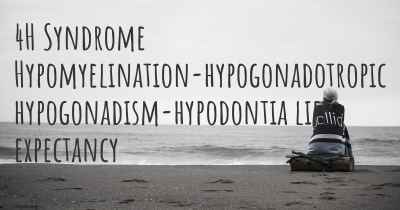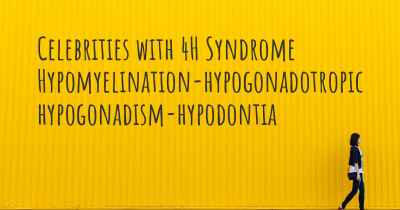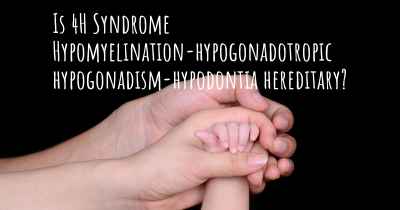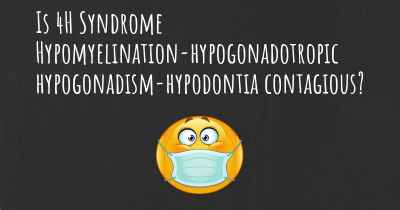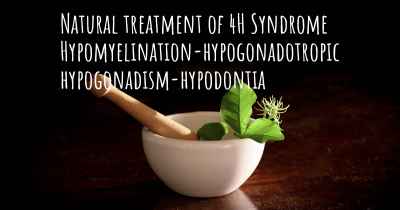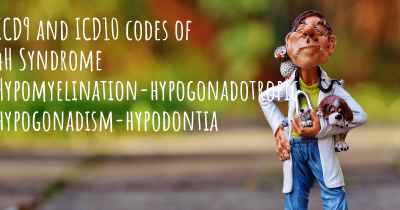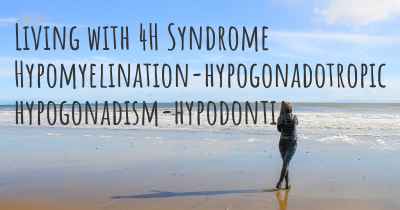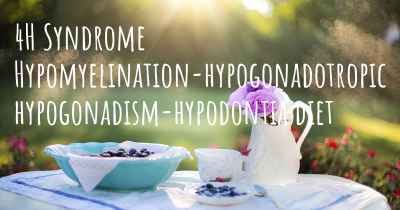What is the history of 4H Syndrome Hypomyelination-hypogonadotropic hypogonadism-hypodontia?
When was 4H Syndrome Hypomyelination-hypogonadotropic hypogonadism-hypodontia discovered? What is the story of this discovery? Was it coincidence or not?
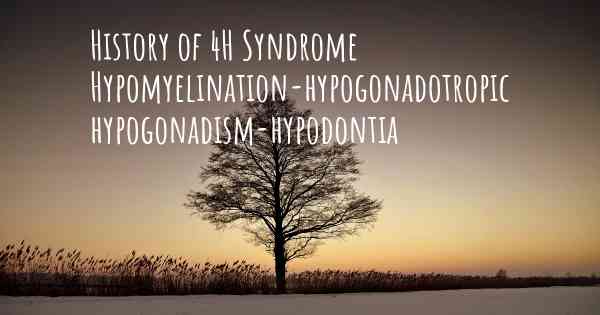
History of 4H Syndrome Hypomyelination-hypogonadotropic hypogonadism-hypodontia
4H Syndrome, also known as Hypomyelination-hypogonadotropic hypogonadism-hypodontia, is a rare genetic disorder that affects multiple systems in the body. It was first described in medical literature in the early 1990s, and since then, researchers have made significant progress in understanding its causes and manifestations.
Clinical Presentation:
The name "4H Syndrome" refers to the four main features of the disorder: hypomyelination, hypogonadotropic hypogonadism, hypodontia, and a characteristic facial appearance. Hypomyelination refers to the underdevelopment or lack of myelin, the protective covering of nerve fibers in the central nervous system. This leads to neurological symptoms such as delayed motor development, muscle weakness, and coordination difficulties. Hypogonadotropic hypogonadism is characterized by a deficiency in the production of hormones that regulate sexual development and fertility, resulting in delayed or absent puberty and infertility. Hypodontia refers to the absence of some or all teeth, which can cause dental problems and affect speech and eating abilities. The characteristic facial appearance includes a prominent forehead, a broad nasal bridge, and a thin upper lip.
Genetic Basis:
4H Syndrome is caused by mutations in the POLR3A, POLR3B, or POLR1C genes, which are involved in the production of RNA polymerase III. This enzyme is essential for the transcription of specific genes that play a crucial role in the development and maintenance of myelin, as well as the regulation of hormone production. The inheritance pattern of 4H Syndrome can vary, with both autosomal recessive and autosomal dominant forms reported.
Diagnostic Process:
Diagnosing 4H Syndrome can be challenging due to its rarity and overlapping symptoms with other disorders. A thorough clinical evaluation, including neurological, endocrine, and dental assessments, is necessary. Genetic testing can confirm the presence of mutations in the POLR3A, POLR3B, or POLR1C genes. Brain imaging studies, such as magnetic resonance imaging (MRI), may reveal hypomyelination or other abnormalities in the central nervous system.
Management and Treatment:
Currently, there is no cure for 4H Syndrome, and treatment focuses on managing the symptoms and improving the individual's quality of life. A multidisciplinary approach involving various specialists, such as neurologists, endocrinologists, and dentists, is essential. Physical and occupational therapies can help improve motor skills and coordination. Hormone replacement therapy may be necessary to induce puberty and address fertility issues. Dental interventions, including prosthetics and orthodontics, can assist with oral health and function.
Prognosis:
The prognosis for individuals with 4H Syndrome varies depending on the severity of symptoms and the specific genetic mutation involved. Some individuals may have mild symptoms and lead relatively normal lives, while others may experience significant disabilities. Early diagnosis and appropriate management can greatly improve outcomes and quality of life.
In conclusion, 4H Syndrome is a rare genetic disorder characterized by hypomyelination, hypogonadotropic hypogonadism, hypodontia, and a characteristic facial appearance. It is caused by mutations in the POLR3A, POLR3B, or POLR1C genes. Diagnosis involves a comprehensive clinical evaluation, genetic testing, and imaging studies. Although there is no cure, a multidisciplinary approach can help manage symptoms and improve the individual's well-being. The prognosis varies depending on the severity of symptoms and early intervention.
Posted Oct 17, 2021 by Effectivespell
